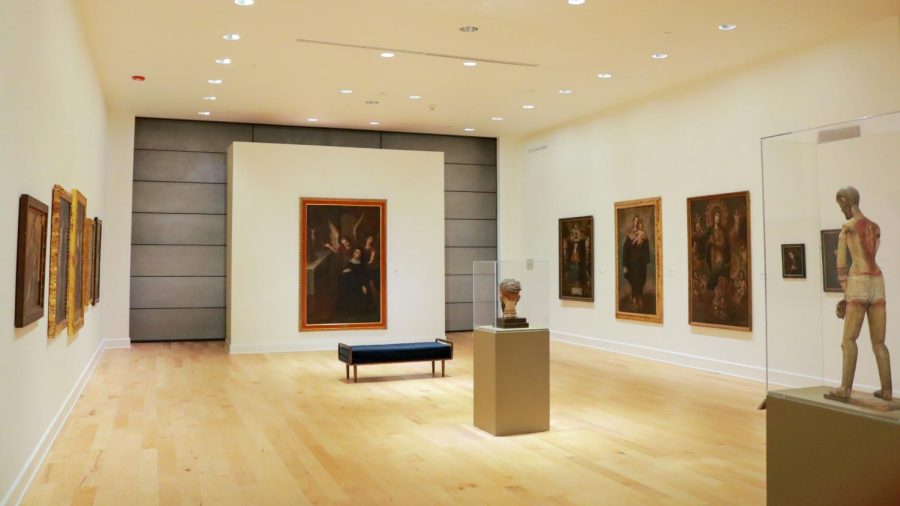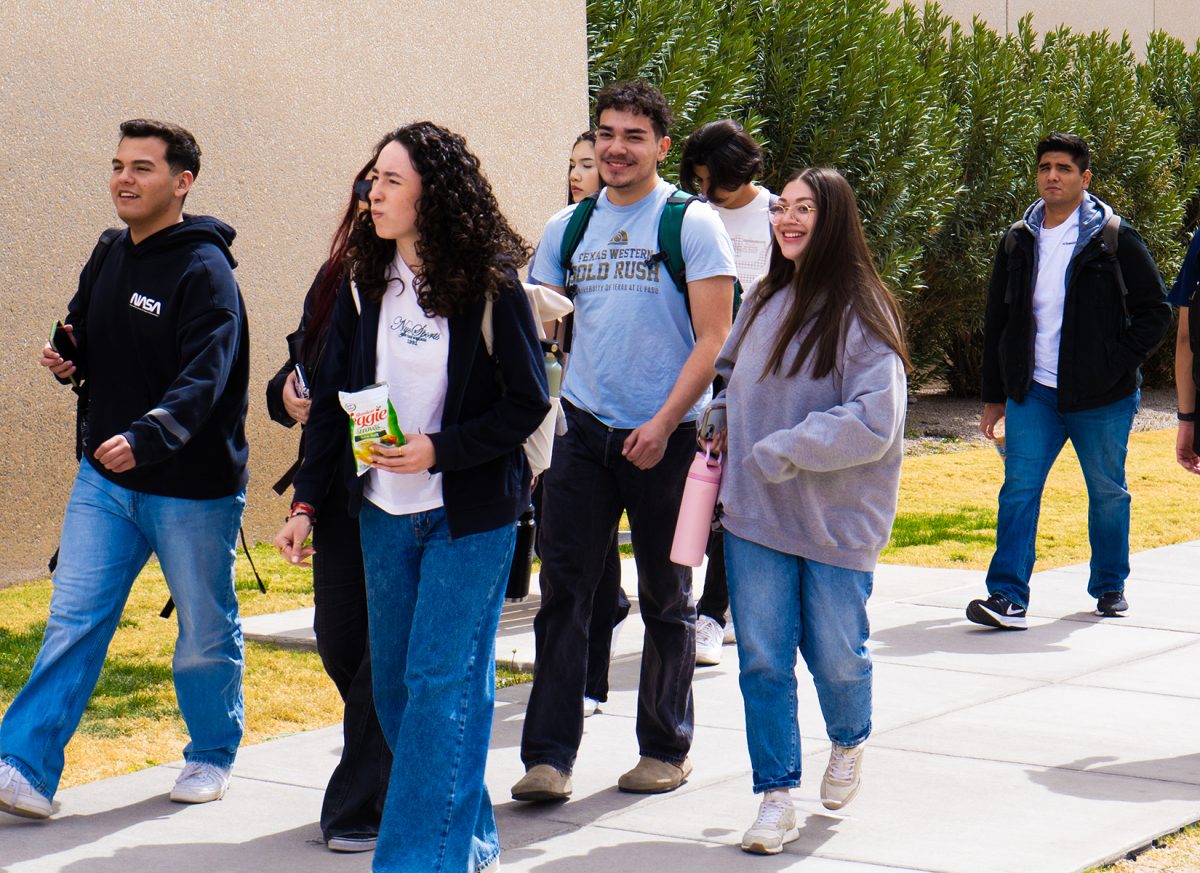The El Paso Museum of Art (EPMA) renewed its second floor gallery in 2019. It was the first time in 20 years the museum had done something like this.
The museum’s newest exhibition, “Refresh,” features more than 300 new art pieces in its second floor gallery. Also included in this refresh is new flooring, a new ceiling, and new walls in the area. The new walls allow for 26% more space for art displays.
The new exhibition area features five diverse styles of art, said EPMA’s art school coordinator, Stephany Garnica.
“(The exhibition space) highlights the Latin American art from the Spanish Colonial era, the early American painting and sculpture, Mexican Retablos, early Texas art and contemporary art,” Garnica said.
Garnica said the museum hasn’t decided when it will be open to the public again, but in an exclusive walk-through of the EPMA’s second floor gallery, The Prospector saw four amusing pieces and exhibits.
An augmented reality experience
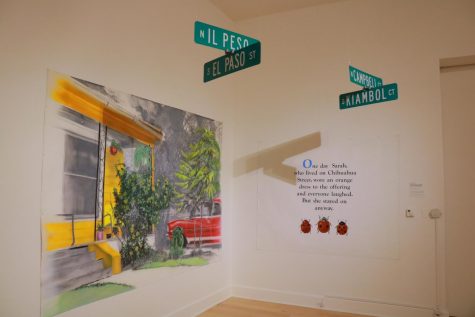
Walking into the “Early Texas Art” exhibit, patrons can see an art painting come to life before their eyes—all through the screen of a smartphone.
The art piece capable of such thing is none other than “David Lawrence,” a 1935 oil on canvas painting by American painter Henriette Wyeth.
The painting is that of a young black man, David Lawrence, who was Wyeth’s brother’s best friend. By downloading the “Augment El Paso” app, people can see David grinning and blinking his eyes, as the history of the painting and the artist is narrated.
Wyeth and her husband frequently visited El Paso to watch polo matches and crossed the border southbound to Ciudad Juárez to see bull fights, according to the narrative given in the AR app. Wyeth’s paintings are recognized by the painter’s signature irises, which are included in the “David Lawrence” painting, as David holds the flowers in his hands.
Celia Álvarez Muñoz’s contemporary piece from a collection called entitled “Postales” was painted with acrylics on canvas and features metal street signs. This piece is also available in an AR experience. It’s in the form of a giant storybook, Álvarez Muñoz said in the AR narration.
Álvarez Muñoz included El Paso street name signs of Campbell Street and El Paso Street. But each street name is written in the ways they are pronounced in the Borderland’s two major languages, English and Spanish. El Paso, in Spanish, is written “Il Peso,” as it would be pronounced in English. Campbell, in English, is written “Kiambol,” as many pronounce it in Spanish.
Leo Villarreal’s LED light art
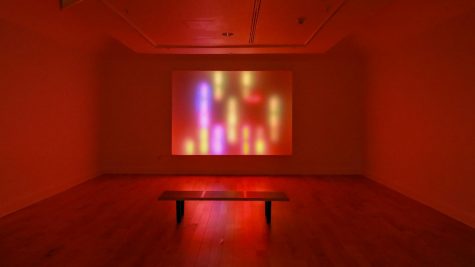
“Lightscape,” by Albuquerque artist Leo Villarreal, is a wall-bound sculpture made with LED lights, created in 2002 and mounted on the museum’s walls in 2019.
The piece stands alone in a room south of the Early Texas Art exhibit. Upon entering, patrons are immediately engulfed with the reflection of colorful lights that bounce off the white walls. The sculpture of lights makes shifts in colors, from blue and green to purple and red hues.
“I think it kind of reminds me like, like streets in New York, or Vegas, during the night,” Garnica said.
Villarreal is known internationally for his LED light pieces. “Lightscape” will not permanently sit on the exhibition floor, but it will be part of the museum’s gallery forever, as it was gifted to EPMA last year.
Contemporary art with a sarape
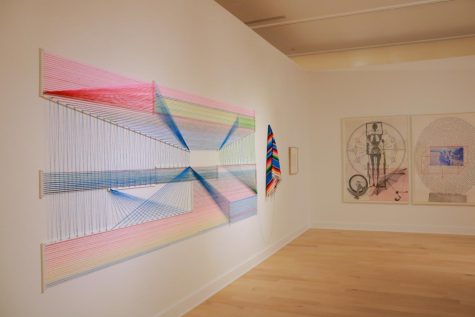
EPMA’s new exhibition also features El Paso-based artists—one of them being Adrian Esparza. His “One and the Same” is a geometrical piece made from yarn, connected a colorful Mexican sarape mounted on the wall. The minimalist piece depicts an architectural design. It was constructed in 2005.
Latin American art from the Spanish Colonial era
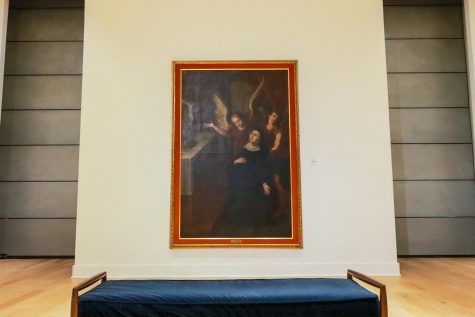
Paintings and sculptures from this theme date back to the 16th and 19th centuries—it’s evident from the way the paint has darkened over time. The paintings are oil on canvas.
“Spanish colonizers introduced Catholicism as well as European artistic styles across the Americas, igniting religious and cultural exchange between the two continents,” EPMA said. “Artists combined Catholic and indigenous traditions and subjects to create distinct and sometimes new religious icons, as in the case of the Virgin of Guadalupe.”
Photographs and virtual tours of the “Refresh” exhibition and new renovations are available on EPMA’s website. The museum has been closed to the public since March of last year, as the COVID-19 pandemic swept through the Borderland.
There will be virtual art classes during the Spring.
“We have the painting class and we have the sculpture class. We have (classes) for kids to teens,” Garnica said. “This is actually the first time we’re going into this classes virtually live via zoom, where the kids can interact with the teachers. They can ask questions. They can participate.”
For more information on virtual art classes, visit www.epma.art.
Andrea Valdez may be reached at [email protected]; @AndreaVRNews on Twitter.


